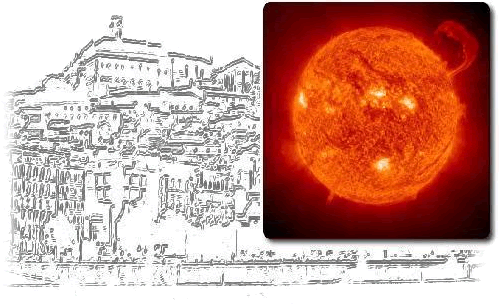|
|
|
|
|
|
|
|
|
|
|
|
|
Bojan Vrsnak, Mr. - PhD |
|
Hvar Observatory, Faculty of Geodesy, University of Zagreb, Kaciceva 26, HR-10000 Zagreb, Croatia
|
|
|
|
|
|
|
|
Session 3 - Poster |
|
Forecasting the arrival of Coronal Mass Ejections: The Drag-Based Model |
|
B. Vršnak, T. Zič, J. Čalogovič, M. Dumbovič, Hvar Observatory, Faculty of Geodesy, University of Zagreb, Zagreb, Croatia
|
|
|
|
We present a new space weather online forecast-tool for predicting the arrival of Interplanetary Coronal Mass Ejections (ICMEs).
The forecast-tool is based on the “Drag-Based Model” (DBM), developed in the frame of the European Commission FP7 Project SOTERIA (SOlar-TERrestrial Investigations and Archives)
and advanced within FP7 Project COMESEP (Coronal Mass Ejections and Solar Energetic Particles) and the Croatian Scientific Foundation Project SOLSTEL (Solar and Stellar Variability).
The DBM is based on a hypothesis that the driving Lorentz force that launches CME ceases in the upper corona, and that beyond certain distance the dynamics becomes governed solely
by the interaction of the ICME and the ambient solar wind. This assumption is founded on the fact that in the interplanetary space fast ICMEs decelerate, whereas slow ones accelerate,
showing a tendency to adjust their velocity with the ambient solar wind. In particular, we consider the option where the drag acceleration has the quadratic dependence on the ICME
relative speed, which is expected in the collisionless environment, where the drag is caused primarily by emission of MHD waves. This is the simplest version of DBM, where the
equation of motion can be solved analytically, providing explicit solutions for the Sun-Earth ICME transit time and the impact speed. DBM offers easy handling and straightforward
application in the real-time space-weather forecasting. DBM results are compared with remotely-measured interplanetary kinematics of several ICMEs, whereas forecasting abilities
are validated on the statistical basis by employing in situ measurements. Finally, the advantages and drawbacks of DBM are summarized.
This work has been supported by Croatian Scientific Foundation under the project 6212 „Solar and Stellar Variability“ (SOLSTEL).
|
|
|
|
|
|
|
|




 







 |



